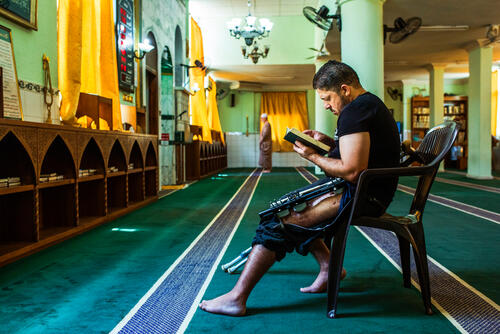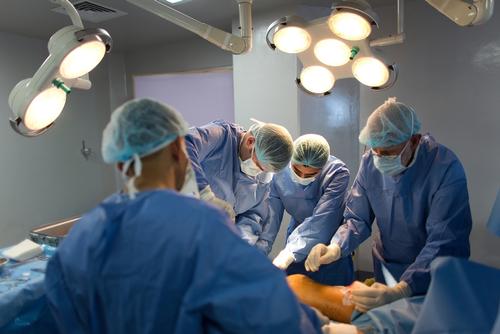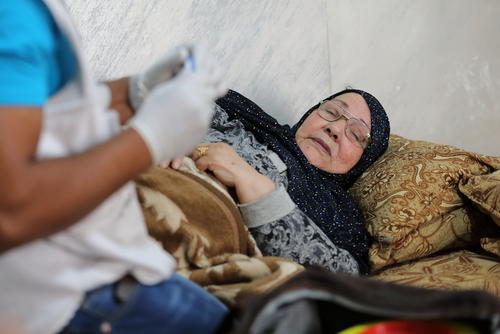Surgeons at our Amman-based reconstructive surgery hospital operate on victims of conflicts in the Middle East whose wounds are inflicted by bomb blasts, bullets, shrapnel and burns. Research and innovation are an important part of the hospital’s programme.
MSF’s reconstructive surgery hospital in Amman, Jordan has for more than 10 years helped heal the bodies and minds of war-wounded patients.
“When we initially opened this hospital, nobody thought we were going to stay 10 years,” says Marc Schakal, MSF head of mission for the reconstructive surgery programme.
“But after 4,500 admissions and more than 11,000 surgical interventions, it’s clear we have work for the next 10 years, and one hospital is not enough.”
In addition to benefitting from orthopaedic, maxillofacial or plastic and burns surgery, patients also receive physiotherapy and mental health counselling.
A team of experts
The surgical team consists of four orthopaedic surgeons, one maxillofacial surgeon, and one plastic surgeon, all from Iraq or Jordan. As a result of regularly treating war-related injuries, surgeons at the hospital have developed unique experience and skills. In tandem with physiotherapy, the reconstructive surgery aims to restore functionality and mobility to patients whose bodies and lives have been altered by weapons of war.
We originally opened the programme in Amman to treat seriously war-wounded Iraqis without access to proper healthcare.
As violence spread across the region, with the 2008 Gaza War, and the Arab Spring in 2011, we began admitting patients from Syria, Libya, Yemen and Palestine. In those countries, the destruction of key health structures, lack of medical staff and the impoverishment of populations have drastically limited the chance of recovery for victims of conflicts.
Research and innovation
More than 50 per cent of patients arrive with chronic infection and more than 60 per cent of these infections are multidrug-resistant.
In 2015, the reconstructive surgery programme set up a microbiology laboratory in the hospital to improve the quality of MSF's medical interventions for patients with infectious complications of conflict injuries. It also aims to provide guidance for the management of resistant orthopaedic infections faced by other regional medical providers.
The hospital also runs an antimicrobial stewardship programme to promote optimal antibiotic use in hospitals to help combat the ever-growing global threat of antibiotic resistant infections. This is achieved through the implementation of what is known as “the four Ds”: correct drug, correct dose, correct duration, and de-escalation of antibiotic therapy.
3D-printed prosthetics
The implementation of a 3D printing project was introduced to the reconstructive surgery programme through the MSF Foundation at the beginning of 2017. It aims to design and produce prosthetics for upper-limb amputees as an alternative to conventional prosthetics, as well access the feasibility of other 3D-printed rehabilitation and prosthetic devices.
Although there are many prosthetic options for lower-limb amputees, there is little available for upper limbs. The 3D printing team aims to target this population by offering customised, lighter and cheaper prosthetics, which are potentially significantly faster to produce than traditional artificial limbs.
A new dedicated website shines a light on the on the stories of patients at our reconstructive surgery hospital and their long, complex journeys of recovery.






